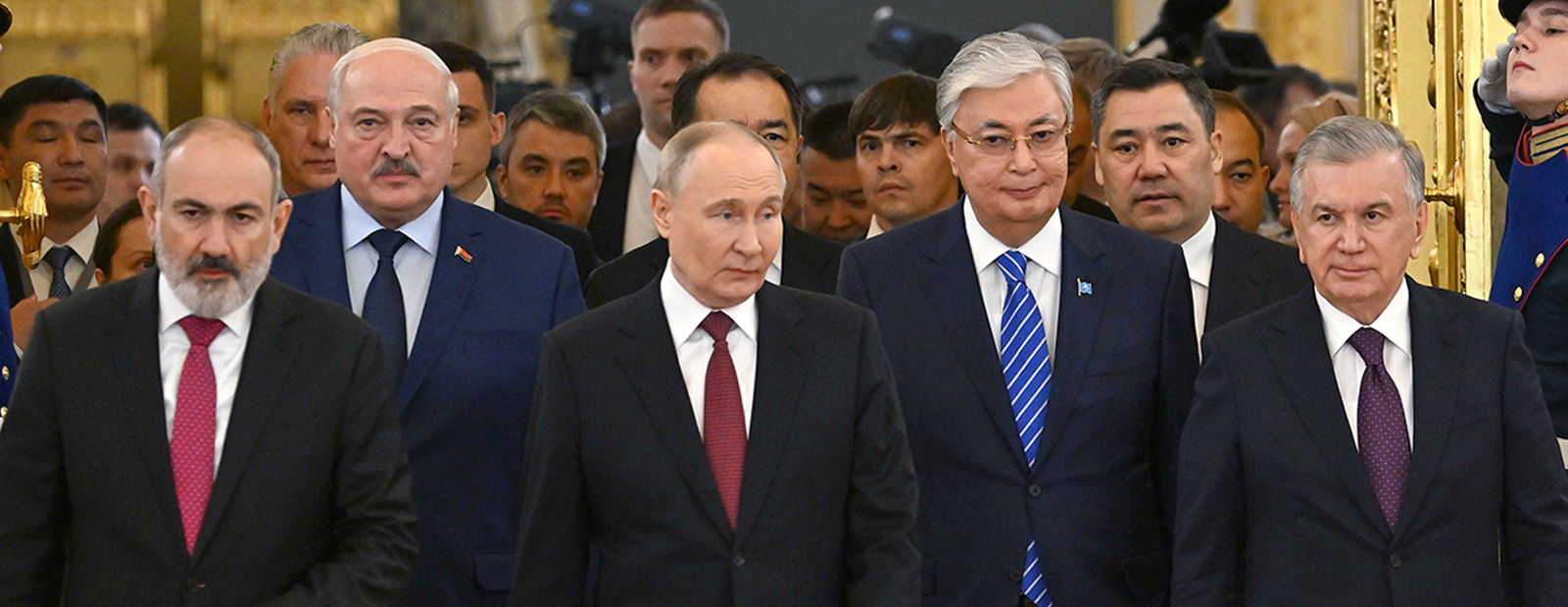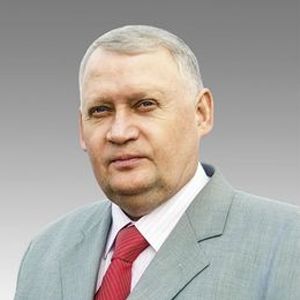Search

Publications
President of Kazakhstan presented new initiatives on transport corridors in Eurasia

Speaking at the jubilee summit of the Eurasian Economic Council (EAEU) President of the Republic of Kazakhstan Kassym Jomart Tokayev put forward a number of important initiatives on international transit. Kazakhstan’s leader proposed modernizing and expanding Eurasian corridors as well as making logistics seamless. As a first priority measure Tokayev recommended that EAEU partners join the future transport corridor between Central Asia (CA) and the Gulf countries. What caused Astana’s initiatives and what will be long-term consequences for the geoeconomics of Eurasia?
Tokayev’s initiatives
It will be recalled that the jubilee EAEU summit on the 8th of May was attended by Prime-Minister of Armenia Nikol Pashinyan, President of Balarus Alexander Lukashenko, President of Kazakhstan Kassym Jomart Tokayev, President of Kyrgyzstan Sadyr Japarov, President of Russia Vladimir Putin, as well as heads of observer states: President of Uzbekistan Shavkat Mirziyoyev, President of Cuba Miguel Diaz-Canel Bermudes, as well as CIS General Secretary Sergey Lebedev and Chairman of the Board, the Eurasian Economic Commission, Bakytzhan Sagintayev. The meeting of the EAEU leaders in Moscow was timed to the 10th anniversary of signing the agreement on the establishment of the union. In the course of the summit the heads of state discussed major tasks and key areas of further cooperation within the EAEU framework, among them – the future of transport corridors.Today the Eurasian transport network provides effective commercial communication between Europe and Asia, North and South. «It is important to develop seamless logistics by harmonizing the tariff policy and customs procedures, as well as creating a unified Eurasian digital corridor», quotes the Akorda press service the words of President Tokayev [1]. Another significant problem is the wear of the transport and logistic infrastructure of the EAEU countries which may become more tangible in the nearest future. «Our association should modernize and expand the unified Eurasian corridor», the President of Kazakhstan stated during the session of the Supreme Eurasian Economic Council. «For this reason, the matter of priority is the modernization and expansion of the transport and logistic infrastructure. Needless to say, that where the rails are laid to the path is paved to new opportunities», – the leader of Kazakhstan noted.
Kassym Jomart Tokayev also said that up to the year 2030 Kazakhstan plans to repair 11,000 km of roads and to lay more than 5,000 km of new railways. «Within the framework of the «One belt One road» global initiative a Kazakhstani terminal was built in the Chinese city of Xi’an in which more than 40% of the container shipping volume is formed on the route China-Europe. There are also plans to launch five transboundary transport logistic hubs on the borders with Russia, China, Uzbekistan, Kyrgyzstan and on the Caspian Sea», Kazakhstan’s President stated. Tokayev told that in Kazakhstan along the whole perimeter the country began a large-scale modernization of vehicle checkpoints. These complex infrastructure solutions will facilitate further integration and expansion of capabilities of the Eurasian transport arteries.
Today there are great prospects of cooperation within the EAEU framework with the rapidly developing countries of Asia, Africa and the Middle East. Under the conditions of world economy transformation, the expansion of a network of agreements on free trade with third countries has a special significance for the Eurasian Economic Council. «Cooperation with the Global South is of special interest given the expected contribution by Asia alone to the current growth of the world GDP on the level of 60%. To enter the markets of the Persian Gulf we propose that the economic union members accede to the Ashgabat agreement on creating an international transport corridor, Kazakhstan is already doing that», – Tokayev noted. It will be recalled that the agreement on creating an international transport and transit corridor between Iran, Oman, Turkmenistan and Uzbekistan (the Ashgabat agreement) was signed in 2011. Later Kazakhstan, Qatar and India acceded to the agreement [2].
Kazakhstan as a logistic hub
Kazakhstan constantly bolsters its positions as a nodal transit hub in Eurasia and with time is able to become a key player in the European land transit. That is what Kassym Jomart Tokayev himself stated in September last year while delivering a scheduled State of the Nation address to the people [3]. To achieve such an ambitious goal Kazakhstan will develop several logistic projects simultaneously, including the corridor North – South in which Russia is very interested, as well as the Trans-Caspian route bypassing the territory of Russia. As Tokayev specially emphasized in his speech, this is not an anti-Russian Fronde or a crafty geopolitical game. The matter is that Kazakhstan historically is at the crossroads of routes connecting the global North and South, West and East, and Astana intends to take this competitive advantage for the land-locked country to become in perspective a full-fledged transport logistic power.
The Kazakhstani leadership believes that one of the drivers of the country’s development is exactly the transport logistic industry. «Dynamic development of this segment is a strategic objective. The share of the transport logistic sector in the GDP structure in the nearest three years is to reach at least 9%», – Kassym Jomart Tokayev underlined in his state-of-the nation address entitled «Economic Course of just Kazakhstan». It will be recalled that based on the 2023 results, the share of the transport industry in Kazakhstan’s GDP was 6.2%. To achieve this strategic objective Kazakhstan intends to implement several transport projects at a time. For example, the railway line Dostyk – Moiynty is being expanded, there are also plans to build new legs of the Bakhty – Ayagoz railway for connection with China and of the Darbaza – Maktaaral railway to increase passing capacity on Kazakhstan’s border with Uzbekistan. Besides, a bypass railway is to be built around Almaty.
As for international logistic corridors, here Astana seeks to diversify geopolitical risks. Thus, one of the main ones will be the Trans-Caspian route which will make it possible to deliver cargoes to Europe directly from China without entering into the territory of Russia. According to the RK’s President, «in the mid-term perspective traffic volumes via this corridor may be increased by five times». However, this calls for pooling efforts with the partner countries – China, Azerbaijan, Georgia, Turkey – and for setting up a joint logistic company in order to minimize losses during multiple cargo transhipments.
Another strategic outlet to the sea (namely – to the Persian Gulf and the Indian Ocean) for the land-locked Kazakhstan is the transport corridor North – South. «What we have to do gradually is to double the passing capacity of the railway part of this route. In the first place, it is necessary to begin modernization of the Kazakhstani section of the railway Bolashak – Chelyabinsk», – Kassym Jomart Tokayev observed. There are all grounds to believe that Kazakhstan’s new Prime Minister Oljas Bektenov and Head of Presidential Administration Aibek Dadebayev will cope successfully with the missions assigned. It is this particular route that PK’s President had spoken for at the EAEU jubilee summit.
Assessments and narratives
The importance of Kassym Jomart Tokayev’s new initiatives for Russia can hardly be overestimated. As was noted earlier in the CISS report, «Kazakhstan is perceived by us as an important buffer from Southern countries from where the flow of migrants, criminals and forbidden substances, potential terrorists and extremists goes to Russia, while, on the other hand, as an important territory for the transit of Russian cargoes to Central Asia and China» [4]. Interrelationship of Russia and Kazakhstan in the security and transit sphere is so big that they are rightly referred to as the «Siamese twins». For example, three quarters of its total export Kazakhstan had always supplied in transit via the Russian territory of which 80% is the Kazakhstani export oil. Russia, in turn, is interested in Kazakhstan as a key transport node for the implementation of new projects One Belt, One Way and International Transport Corridor (ITC) North – South. It will be recalled that now Kazakhstan is the main source of parallel import for sanctions-stricken Russia. Regional experts indicate that that a break of suck close relationship, let alone a potential conflict, may be fatal for the security and territorial integrity of both Russia and Kazakhstan.
It is worth noting that similar assessments were given by the American export on geopolitical strategy Peter Zeihan who is known to have predicted precisely geopolitical repercussions of the recent years. In his book «Accidental superpower» the ex-vice-president of Stratfor writes as follows: «Kazakhstan’s role in Russia’s future is primarily as a buffer region. It exists in a sort of no-man’s land between Russia’s densely populated European territories and the Turkic peoples of Central Asia to the south and the Chinese to the east. Moscow doesn’t need Kazakhstan to be robust or even to be a successful state, it just needs it to continue existing. So long as there is an independent Kazakhstan, then there is no one breaking down Russia’s back door». In the opinion of Peter Zeihan, the main achievement of the new times – globalization – is now on the brink of collapse for geopolitical, economic and demographic reasons. The future belongs to big macroregions and geoeconomic blocs capable of surviving independently as compartments in a submarine [5].
Conflicts between geopolitical blocs related to sea traffic and the development of modern types of piracy are gradually becoming a new norm. The West’s war of sanctions and a number of collisions in the Middle East showed clearly that cheap maritime shippings are similar to the open lines of communications that can be blocked in a moment. However, land routes, though more expensive, are similar to the secure lines of communications; these are indispensable in the event of external influence. In today’s turbulent world the role of constructive cooperation with neighboring countries is also rising dramatically. This cooperation is tangible not only in the economic indicators, but also in the transport situation. As was noted, «a transport blockade by the nearest neighbors can destroy all Russian achievements in promoting its interests in other parts of the world and nullify the promising projects of the New Silk Road via the Russian territory» [6].
Of course, a simple replacement of the transit model East-West with that of North-South does not bring strategic results. It only means shifting the risks to another location since the ITC North-South has Iran only as a key partner and terminal point. Iranian ports can be easily blocked by the USA and its satellites under the pretext of «fighting terrorism», while the territory of Iran proper be subjected to destabilization by disgruntled neighbors or outside players. A subtle solution to this complicated transport problem was suggested in the late 90-s of the past century by Vadim Tsymbursky, a Russian geopolitician referred to rightly in the West as a «Russian Huntington». According to his idea, optimization of a logistic hub is practically feasible by way of transport oligopoly by Russia, China, Turkey and Iran in the field of transcontinental communications on a bigger part of Eurasia. If this strategy is implemented, international transport corridors connecting various ends of the continent would be under the common control of just a few allied powers. Such interconnected multitude of ITCs guarantees stability and invulnerability of supplies from external influence and from inappropriate behavior by any of the partner countries.
Prospects of Eurasian transit
After a closer look it becomes clear that Kassym Jomart Tokayev’s new initiatives are actually a practical implementation of the breakthrough idea of «transport oligopoly» with its multitudes of routes. For example, Kazakhstan simultaneously launches five transboundary transport logistic hubs on the borders with Russia, China, Uzbekistan, Kyrgyzstan and on the Caspian Sea. Russia acts in the same vein today building in many vectors its most essential ITC North – South consisting of three major routes. The first one goes along the western coast of the Caspian Sea via Dagestan, Azerbaijan, Iran and provides an outlet to the markets of the Persian Gulf countries, India, Pakistan, South-East Asia and Africa, key importers of Russian products. The second is a sea one and establishes connections between the ports of the Caspian Sea. The third one goes along the eastern coast of the Caspian Sea from Russia to Iran via Kazakhstan and Turkmenistan. Actually, the Caspian section of the ITC North-South is also a working model of the transport oligopoly, while the territory of the Caspian region itself becomes a new integration point of Eurasia.
One of Vadim Tsymbursky’s works brilliantly designates Russia as a «transregional power» responsible for maintaining transregional structure of the entire Eurasian continent. [7]. In such a promising model Russia will no more be torn between Europe, China and the Middle East, but will become for them an indispensable agent of reproduction and expansion. In the modern world future energy projects of Russia should be added to the existing transport corridors and those under construction. These include both a hub in Turkey that opens to us the Balkans and Southern European countries as friendly partners as a counterbalance against the hostile Northern and Central Europe and the future pipeline project TAPI along the route Turkmenistan – Afghanistan – Pakistan – India which can and should become a multimodal corridor. The total of the above-mentioned projects can propel Russia from the backyard of raw materials of the economic grossraum to the forefront and make it a huge production conveyor. This creates prerequisites for including Russian production facilities, research and development centers into labor division system of the rapidly developing APR.
All this together is meant to create a radically new geoeconomic situation in Eurasia and connect global economic grossraums (great areas) to each other. The development of a unified system of transit corridors will allow Russia to solve a number of strategic tasks: increase connectivity and bolster the country’s integrity, to elevate international geoeconomic significance of Russia and its allies, to impart a new quality to the economy and set new tasks to the limitrophe countries around us. As geopolitician Vadim Tsymbursky had foreseen, «after a long Russian hegemony Great Limitrophe today is a huge zone of weakly militarized and practically demilitarized formations trying to get any support for their own policy through combinations of civilized adoptions and intra-limitrophe conspiracies». A practical strategy of success is a new system of geopolitical «high and low tides» on our border shelf. The western extremity of Great Limitrophe should for a while become an economic and demographic wasteland, the eastern one should turn into an affluent haven for a strategic turn towards the South and East.
In a negative scenario our border areas may turn from the historically immunity belt’ of Russia into a huge «flame of fire», as well as into a depopulated and deindustrialized zone where any creative activity is impossible. In a positive scenario a joint project of geoeconomic integration for international transport corridors is implemented, which can give a new meaning to the existence of border areas or even become a method for another reassembly of Great Limitrophe «under Moscow’s thumb». Actually, today it is the only rational project for a real integration, secular and non-ideological. In this it has an edge over various nostalgic projects like «restoration of the USSR» or even «the fifth Russian empire» already practically unfeasible and rejected by our neighbors. It is necessary to understand clearly that all projects based on nostalgia do not live long and fade away with a change of generations. Let us say unequivocally that unconventional activities by Russia and its allies in Great Limitrophe in the transit sphere may have an effect on its and ours civilization destiny.
1. President of Kazakhstan took part in the session of the Supreme Eurasian Economic Council. Akorda – official site of the President of the Republic of Kazakhstan, 08.05.2024. https://www.akorda.kz/ru/prezident-kazahstana-prinyal-uchastie-v-zasedanii-vysshego-evraziyskogo-ekonomicheskogo-soveta-844838
2. Tokayev called upon to accede to the Ashgabat agreement on creating a transport corridor. Biznes Turkmenistan, 09.05.2024. https://business.com.tm/ru/post/11798/tokaev-prizval-prisoedinitsya-k-ashhabadskomu-soglasheniyu-o-sozdanii-transportnogo-koridora
3. State-of-the-Nation address by President Kassym Jomart Tokayev to the people of Kazakhstan «The Economic Course of just Kazakhstan». Akorda – official site of the President of the Republic of Kazakhstan, 01.09.2023. https://akorda.kz/ru/poslanie-glavy-gosudarstva-kasym-zhomarta-tokaeva-narodu-kazahstana-ekonomicheskiy-kurs-spravedlivogo-kazahstana-18588
4. Russia and Kazakhstan: «road map» up to 2030. Caspian Institute of Strategic Studies, 12.10.2023. https://caspian.institute/product/sektor-kazahstana-kisi/rossiya-i-kazahstan-dorozhnaya-karta-do-2030-goda-38498.shtml
5. Safe havens: what countries will benefit from the collapse of globalization in the event of the end of the world. Forbes, 05.05.2024. https://www.forbes.ru/society/511710-tihie-gavani-kakie-strany-vyigraut-ot-kollapsa-globalizacii-v-slucae-konca-sveta
6. Russia: encircled by friends of enemies? Regnum, 22.04.2019. https://regnum.ru/article/2617025
7. Vadim Tsymbursky. Geopolitics for «Eurasian Atlantis». Pro et contra, 1999, v.4, No.4.







